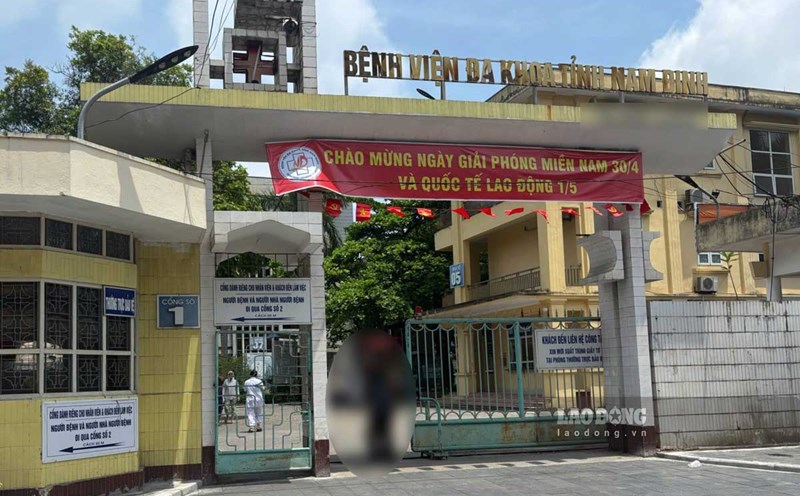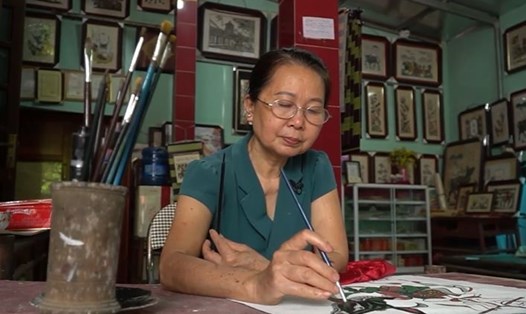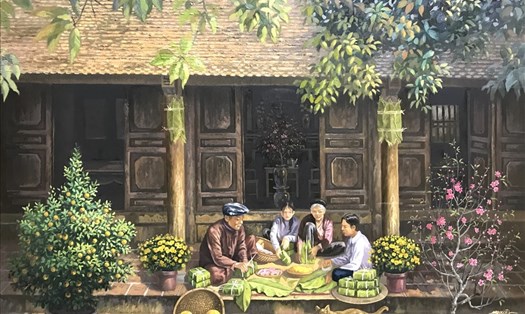There are things that are only bright red, a lucky color for good fortune, such as paper amulets, bright red cloth amulets of the H'mong people or chicken paintings (red paintings) of Kim Hoang village (Van Canh, Hoai Duc, Hanoi).
There are also sacred worship paintings of the Dao people painted and hung during Tet as a bridge connecting with their ancestors. Then there are the elegant and graceful Hang Trong Tet paintings (Hanoi) or the Sinh village Tet paintings (Hue) with the vibrant five colors, full of the five elements welcoming the three-sun opening ceremony.
Depending on the culture, beliefs and customs, Tet paintings in each place and of each nation express a different meaning. However, Tet paintings are just Tet paintings, with the original symbol of the time to bid farewell to the old and welcome the new, to nurture optimism and hope, first for the eyes of the viewer, then for the eyes of the scouts, in the end, they are still Tet paintings from Dong Ho village (Thuan Thanh, Bac Ninh).
The thin, rough Tet painting made of do and mulberry fibers is the flag signaling the arrival of spring. The painting is drawn from a woodblock, then polished to each color by the hands of the villagers, regardless of age, gender, and age. It is a powerful symbol of the spring energy beginning the vigorous cycle of “spring birth, summer growth”.
Human dreams are not noble, just a wish for a prosperous and peaceful new year. It is like that, settling down will lead to a happy career, prosperity will create a peaceful scene. What more is needed than that, just the eternal picture of pretty chickens, fat pigs, children happily holding ducks and geese is enough to satisfy the dream of glory and wealth in the homeland.
Just a few colorful paintings of Ho village with colors distilled from soil, sand, rocks, water, leaves... pasted on white lime walls are enough to brighten up a Tet space, and then share joys and sorrows with the homeowner throughout the year, until the day it is replaced by a new hope that is forever old.
On that painting, the original colors change according to the light. The yellow of the Sophora japonica flowers represents abundance, the bright yellow like the sun implies a bountiful harvest, the green represents the bamboo fence of the village, the red of the gac fruit is like a bright bib, the purple silk is like a belt, the black is like a silk skirt worn to the village festival.
All are materials available in nature whose lives have been deeply ingrained in the Vietnamese consciousness since time immemorial. They emit a simple language of instinct and subconsciousness and countless times make people's souls feel nostalgic in the memories of Tet.
The names of Dong Ho village paintings are simply Tet paintings, whether they are named based on the scene such as "Mouse Wedding", "Coconut Harvesting", "Jealousy", "Herding Buffalo and Playing the Flute", "Wrestling", "Swinging" or according to the theme conveying the desire such as "Vinh hoa - Phu quy", "Lao nong tri dien", "Tam duong khai thai".
Therefore, the aesthetics of Dong Ho paintings are the aesthetics of folk art, tending towards simple, genuine beauty, sometimes with a hint of innocence and clumsiness. But it encompasses the Vietnamese worldview and philosophy of life, formed and continued by a long-standing culture.
Although originating from a simple and rustic folk culture, Dong Ho Tet paintings still express a solemn Eastern philosophy, worthy of the sacred atmosphere of Tet as if it were a Tet couplet.
The balance in Dong Ho Tet paintings also shows the idea that the balance of yin and yang is the key to sustainable growth. If there is a painting of a boy holding a rooster with the two words Vinh Hoa, then there must be a painting of a girl holding a duck with the two words Phu Quy. A boy holding a rooster next to a chrysanthemum (ke-cuc) represents the wish for glory. A girl holding a duck next to a lotus (ap-lien) symbolizes nobility.








